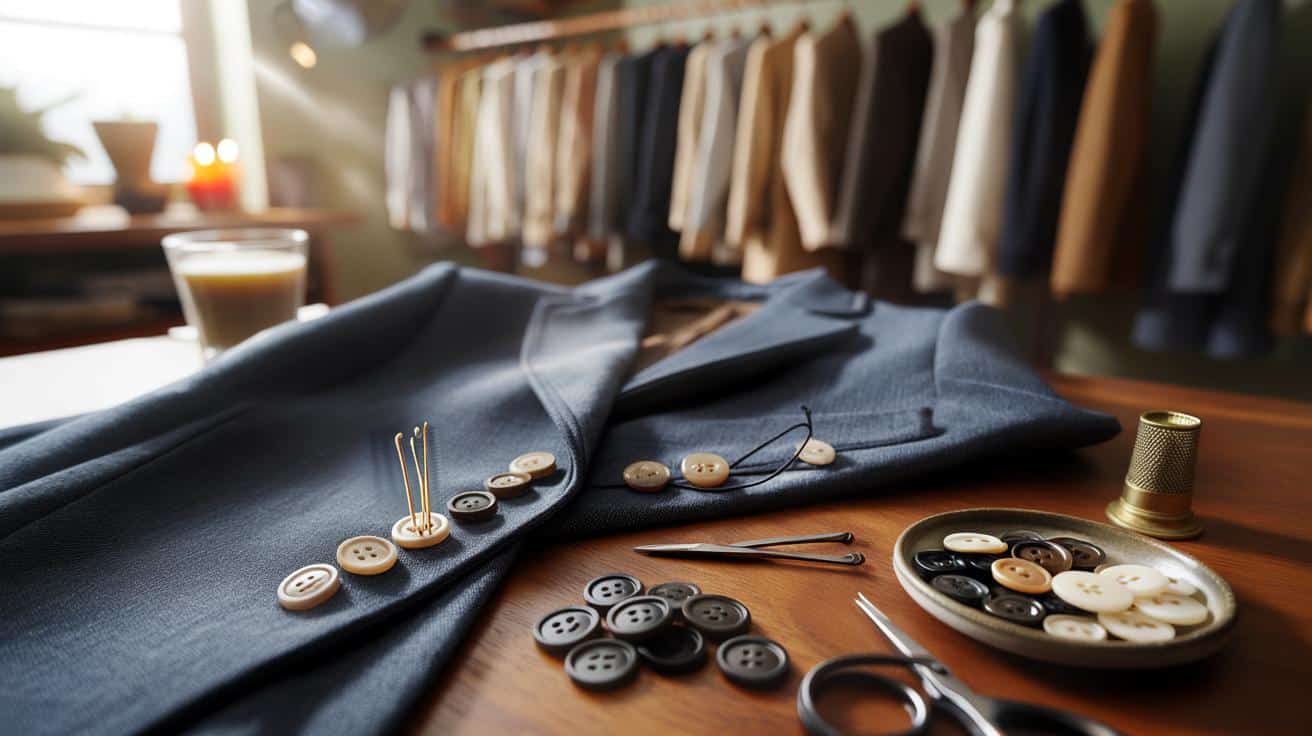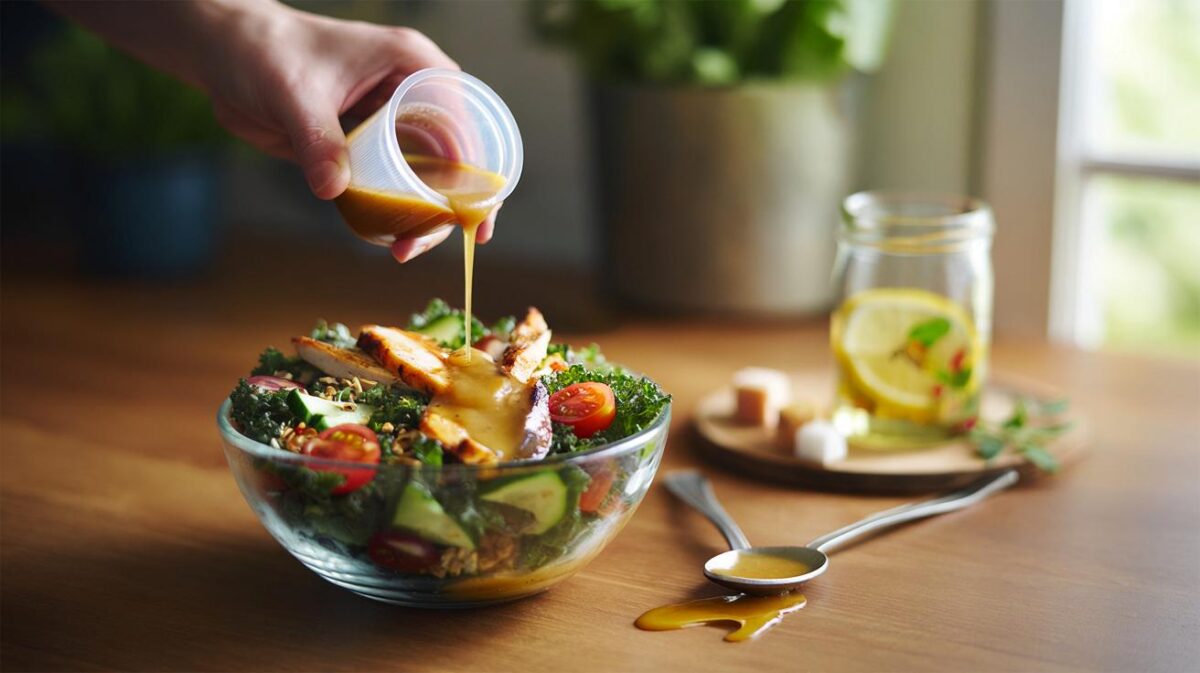A crowded rail. A so-so blazer. A price tag that whispers “bargain” and a look that still reads “bin bag”. There’s a way to flip that script with one almost laughably small move—one that turns charity shopping from chaotic to curated, without blowing the budget or the vibe.
A woman in a pea coat is balancing a latte and a lump of tweed, the kind only a grandad or an editor would love. I watch her thumb the buttons, plastic and shiny under the strip lights, and she hesitates. Back home, I lay a similar jacket on the table, snip, stitch, and step back. The shoulder still sits the same. The fabric is still the fabric. The whole thing looks like it came from a boutique with candles burning and a playlist you Shazam.
Just buttons.
Why this tiny tweak fools the eye
Here’s the strange magic: swap out flimsy, glossy buttons for weighty ones and the entire garment levels up. It’s not only the look. It’s the feel when your hand brushes past, the sound when a coat knocks against your keys. **Change the buttons** and strangers assume the rest is premium. Your £7 find reads like a £170 piece.
I wore a boxy navy blazer to a work dinner. Two colleagues asked if it was Margaret Howell; one guessed APC. It was a charity shop buy with new matte horn buttons from a haberdashery on Berwick Street. I didn’t mention the price. On the Overground home, a teenager on TikTok Live said “clean” and that’s the only validation I needed.
Why does it work? Our brains love shortcuts. Hardware is a shortcut. Shiny plastic screams mass production. Heavier buttons, a softer sheen, a deeper carve—these cues hint at care, time, cost. **Weight signals quality**, and quality reads as curation. The garment hasn’t changed much. Your perception has. And perception is what makes a rail feel like a gallery, not a jumble sale.
How to do it without faff
Start with the pieces that give maximum payoff: coats, blazers, cardigans, shirt dresses. Pick buttons two notches up from what’s on there—matte horn, corozo, brushed metal, thick mother-of-pearl. Match the diameter you’ve got, or go 1–2 mm bigger if the fabric is chunky. Keep the number and placement the same. New thread. Tight shanks. Tiny knot. Done.
We’ve all had that moment when you love the cut and hate the detail. This is the rescue. Don’t chase novelty, chase cohesion. Choose one metal tone you actually wear—silver, brass, or blackened gunmetal—and reuse it across finds. Let the button finish echo your jewellery and bag hardware. **One metal, one story**. Bays, not chaos. Let’s be honest: nobody does this every day.
Think of it like editing a playlist. Two or three repeated notes, not five genres at war. Avoid super glossy plastic, novelty shapes, and logos you don’t believe in. If in doubt, go darker and flatter. Your future self will thank you.
“Buttons are tiny billboards,” says a London visual merchandiser I met on a shoot. “You read them from across the room. Get them right and people fill in the rest with ‘expensive.’”
- Toolkit: small scissors, strong polyester thread, needle with a sharp point, a toothpick to form the shank, thimble if fabric is thick.
- Sources: local haberdashery, vintage button jars at markets, deadstock sellers online, spare buttons from your own wardrobe.
- Fast fix: if a button is missing, move the lowest one to the top and fill the bottom gap with a belt until you replace the set.
What changes when the buttons change
The rail stops feeling random. Your outfits start to talk to each other. A brown herringbone jacket with dark horn buttons makes peace with your tan loafers and brass buckle. A navy cardigan with thick mother-of-pearl sits happily with a crisp shirt and silver studs. People call it “quiet luxury”; really it’s a tidy story told in hardware. Your charity route morphs into a treasure hunt for silhouettes and fabric, because you know the finishing touch is yours to upgrade. The spend is tiny. The impact, loud. Share a picture and watch the comments come in: where did you find that? The answer is the same every time—out there, on a rail, ready for your hands and a packet of buttons.
| Point clé | Détail | Intérêt pour le lecteur |
|---|---|---|
| Button swap = instant upgrade | Replace shiny plastic with matte horn, corozo, or brushed metal | Transforms “cheap” to “curated” in minutes |
| Keep a single hardware tone | Silver, brass, or gunmetal across your wardrobe | Makes outfits look intentional and expensive |
| Target high-impact items | Coats, blazers, cardigans, shirt dresses first | Maximum visual payoff for minimal effort |
FAQ :
- Does this work for menswear too?Yes. Tweed jackets, pea coats, overshirts, and cardigans all take on a sharper, more “heritage” feel with heavier, matte buttons.
- Where can I buy good buttons in the UK?Local haberdasheries, market stalls, deadstock sellers online, and the little drawers in charity shops that keep spares. Check fabric shops on Berwick Street or your town’s market.
- How much should I spend?£3–£10 for a full set is common. If you’re replacing metal coat buttons, maybe £12–£18. Still less than a takeaway, and the item looks triple the price.
- What if I can’t sew?Ask a friend, watch a two-minute video, or pop into a dry cleaner or alterations place. They’ll usually stitch on a set while you wait for a small fee.
- Can I glue buttons?Skip glue. It fails and looks messy. Stitching gives strength and a neat thread shank so the fabric sits right and the button hangs like it belongs.








